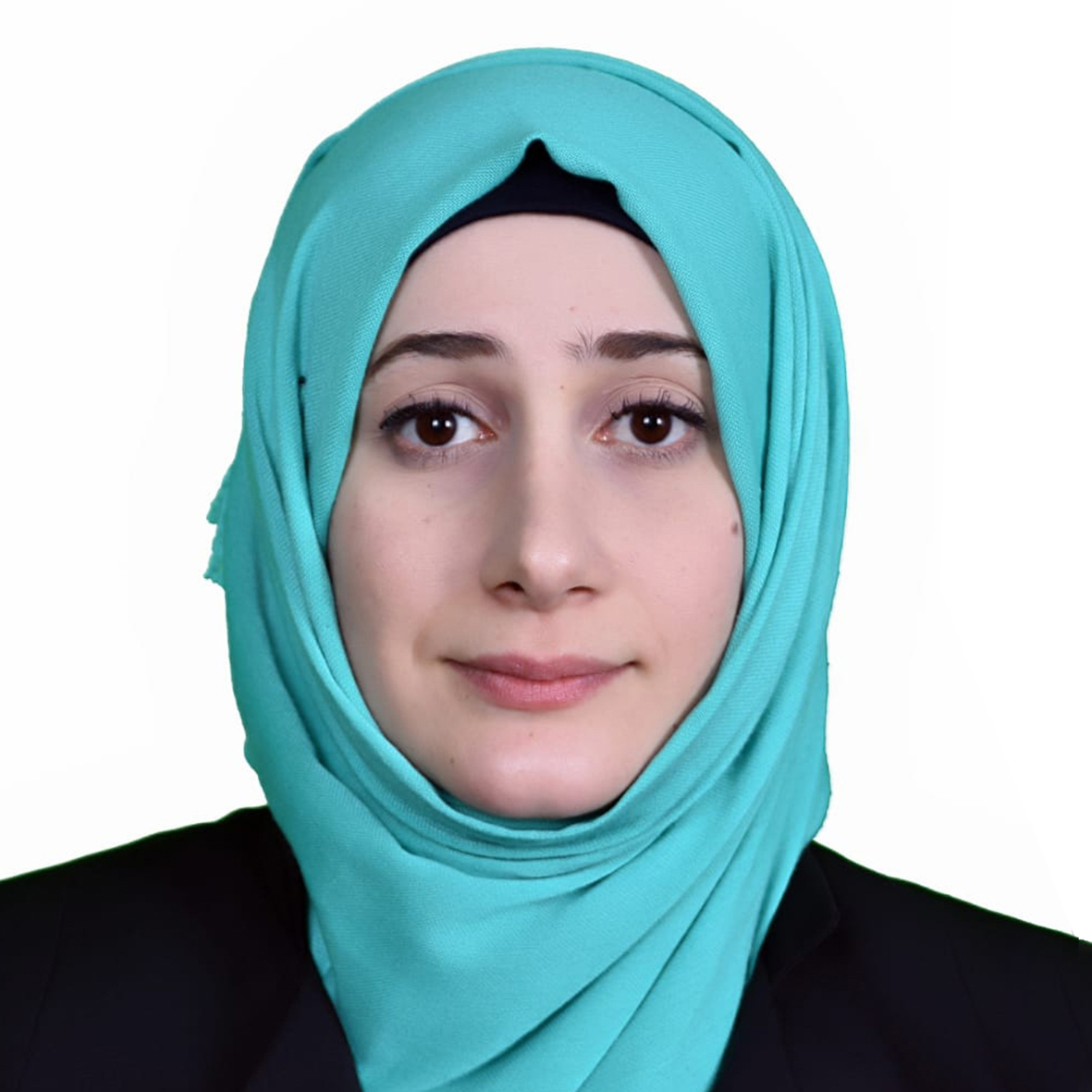
Neam Salim Mohammed Sheet
Research Interestsgraphics
images processing
FPGA
Raspberry pi
AI
| Gender | FEMALE |
|---|---|
| Place of Work | Mosul Technical Institute |
| Position | Women's Affairs Unit Director, Mosul Technical Institute |
| Qualification | Master |
| Speciality | Computer engineering |
| Mti.lec40.neam@ntu.edu.iq | |
| Phone | 009647730318858 |
| Address | the locality of al mohandiseen, mosul, Mosul, Iraq |

Ne'am Salim M. Sheet
Assistant Lecturer, Northern Technical University (NTU), Technical Institute of Mosul, Networking Technologies and Computer Software Department. Ne'am is a distinguished academic and administrator, currently holding the position of Assistant Lecturer at the Technical Institute of Northern Technical University (NTU), where she also contributes to the Women's Affairs Unit as a director.
Mrs. Ne'am earned an MSc in Computer Engineering Technology from the Technical College of Mosul (2/2/2014) and a B.Sc. in Computer Engineering Technology from the Technical College of Mosul, Iraq (13/7/2008). She is also a researcher and author.
Prior to her appointment at NTU, she served as an Assistant Lecturer at several universities. From 1/10/2014 to 1/7/2016, she worked in the Computer Science Department at Cihan University in Dohuk. From 1/12/2016 to 22/6/2017, she was part of the Computer Science Department at Al Bayan University in Erbil. Additionally, she worked as an external lecturer at Mosul University in the Computer Science Department during the 2017/2018 academic year.
Skills
cisco trainer (95%)
Artificial Intelligence (90%)
Deep Learning and Neural Networks (90%)
Machine Learning (95%)
Matlab (100%)
VHDL (100%)
C++ (100%)
FPGA (100%)
Computer Graphics (95%)
Supervision
ليث اسامة محمد, نور الدين علي حسين, علي منهل
Year: 2024Academic Degree: Diploma
Supervisor Type: Supervisor
Supervisor State: Graduated
قياس ملوحة المياه باستخدام الاردوينو
يوسف قتيبة,نبأ مروان, نمارق نشوان, هاجر عمر
Year: 2024Academic Degree: Diploma
Supervisor Type: Supervisor
Supervisor State: Graduated
قياس منسوب المياه باستخدام الاردوينو
محمد فائق, زبيدة عمار , ريام شيت, زينة عادل
Year: 2024Academic Degree: Diploma
Supervisor Type: Supervisor
Supervisor State: Graduated
قياس نسبة الشوائب الغير ذائبة في الماء باستخدام الاردوينو
يونس محمود, احمد سعد, هدى سعدي,
Year: 2025Academic Degree: Diploma
Supervisor Type: Supervisor
Supervisor State: In Progress
مشروع منظومة اطفاء الحرائق
مازن صدام
Year: 2025Academic Degree: Diploma
Supervisor Type: Supervisor
Supervisor State: In Progress
مشروع المنزل الذكي
ابراهيم محمد يحيى,
Year: 2025Academic Degree: Diploma
Supervisor Type: Supervisor
Supervisor State: In Progress
نظام المستشفى الذكي
عمر همام ساكن
Year: 2025Academic Degree: Diploma
Supervisor Type: Supervisor
Supervisor State: In Progress
روبوت اطفاء الحرائق باشتخدام الاردوينو
Working Experience
technical institute of mosul [Women's Affairs Unit Officer, Mosul Technical Institute]
Aug 9, 2023 - PresentPublications
"Hardware Implementation of 3D-Bresenham's Algorithm Using FPGA"
Mar 4, 2013Journal Tikrit Journal of Engineering Sciences
Issue no. 2
Volume Vol.20
Traditional 3D-Bresenham's algorithm is efficient in generating lines on raster systems using only integer calculations. This algorithm is needed as a solution of hidden surface problem using depth-buffer method to calculate z value for each pixel, while calculated values of x and y are used to address frame buffer memory, z value is used to test hidden surface by saving the closest depth in depth buffer. In this paper Bresenham's algorithm for plotting 3D-lines is examined then modified to simplify hardware requirements during implementation phase. Basing on efficiency of the algorithm on the space symmetry an enhanced version of this algorithm is implemented using OpenGL. Experimental results confirm results calculated theoretically for both traditional and modified algorithms. The hardware implementation is accomplished for real time applications, and a graphic subsystem is designed using FPGA. Finally, a comparison is accomplished for Spartan3E utilization which is used to implement the hardware unit.
A Real Time Dynamic 3D Graphics Processor Using FPGA
Jul 1, 2013Journal International Journal for Research and Development in Engineering (IJRDE)
Issue Issue.1
Volume Vol.2
Complex three dimensional dynamic graphics processing is computationally very intensive process due to the trigonometric complex algebra and matrices based operations that required to be performed in real-time, so even the newest microprocessors cannot handle more complicated scenes in real time. Therefore to produce realistic rendering for the dynamic 3D graphics hardware solution is required. Since real time graphics processing requires extremely high performance, hardware solutions is used with FPGA technology to improve in performance. This paper a dynamic 3D graphics processor is designed with a transformation unit to generate an animated objects and it is implementation on FPGA by using Xilinx Spartan-3E XC3S1600E kit as a fully functional graphics rendering engine using VHDL and Xilinx's development tools. The designed graphics processor is implemented successfully on FPGA using Spartan-3EXC3S1600E and the dynamic time consumed is 7.246 μ seconds for the designed transformation unit so it is capable to transform approximately 138M vertices per second.
Robust Image Watermarking for Tamper Detection andSelf-Recovery Using SVD and RSA Methods
Jul 4, 2024Journal CENTRAL ASIAN JOURNAL OFMATHEMATICAL THEORY ANDCOMPUTER SCIENCES
Issue 3
Volume 5
To The paper proposes an Image watermarking technique for identifying and self-recovering tampered images. The system identifies tampered images by comparing the SVD values of 4X4 blocks and average pixel intensities of 2×2 blocks. In the process of SVD computation, the RGB channel images are divided into 4X4 blocks, after which a further 2X2 blocks division is executed for determination of average pixel intensity. Within the same block, tamper-detection data is entered, whereas the self-recovery data is scattered all over the image utilising inverse and RSA techniques for neighborhood block-based recovery. This method assures easy long-term self-healing. The outputs produced from testing with 15 multiple host images in varied attacks were constantly performing better with a PSNR ratio upto an average of 45 dB.

